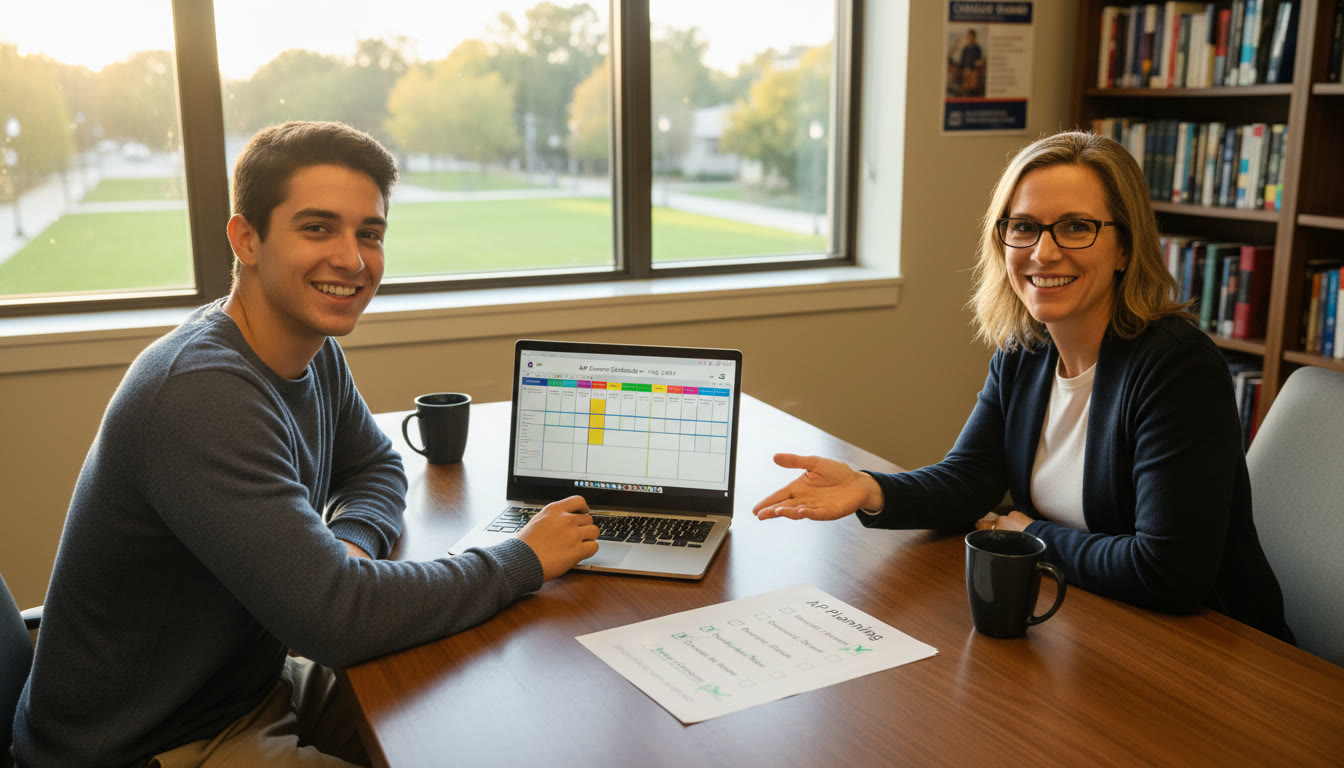Why AP Scores Matter for Purdue First-Year Engineering
If you or your student is heading to Purdue to study engineering, congratulations — you’re about to join a community known for rigorous academics, hands-on projects, and a strong pipeline into industry and research. One practical question that comes up again and again is: “How do my AP scores affect my first year?” The short answer: AP scores can shape your schedule, save time and tuition, and let you jump into more advanced, exciting engineering courses earlier — but only if you know how to use them strategically.
What AP placement usually does (and doesn’t) do
Different colleges treat AP scores differently, and while policies can change, the general landscape is similar across many engineering programs. AP scores are typically used for three main things:
- Advanced placement: Allowing you to skip introductory courses and start at a higher level (for example, starting in Calculus II instead of Calculus I).
- Course credit: Earning college credit that may count toward degree requirements or electives, potentially shortening time to graduation.
- Placement testing exemption: Fulfilling departmental placement requirements so you’re placed in a class that matches your skill level.
What AP scores usually won’t do is guarantee that you’ll avoid all introductory classes or that you’ll automatically be placed into a specialized engineering sequence. Many engineering programs care about both conceptual mastery and lab/recitation experience, so even with credit you might still be encouraged (or required) to take certain core courses within the department.

How to Use Your AP Scores Effectively Before You Arrive
The decisions you make before orientation — which scores to send, whether to accept credit, and how to plan your course load — matter. Here’s a step-by-step approach that turns raw AP scores into smart planning.
1. Check the official AP credit and placement policy
Every university posts a credit and placement policy showing which AP exams and scores earn credit and/or placement. That policy is the authoritative guide for what you’ll get. Look for:
- Score thresholds that grant credit (for example, a 4 or 5 on AP Calculus AB)
- Which courses the credit replaces (e.g., Calculus I, Calculus II, introductory chemistry)
- Whether credit reduces degree requirements or simply provides elective hours
Pro tip: policies can vary by major and by college within the same university. The First-Year Engineering program may have placement rules that differ from the broader College of Engineering.
2. Send your scores promptly
Make sure your official AP scores are sent to the campus before any placement deadlines. There is usually a free score send option each year, but you must select your institution by the posted deadline. If you wait, score reporting fees apply and placement windows may be missed.
3. Decide whether to accept credit or just use placement
Some students choose to accept credit and skip a required course, while others accept placement only and still take the on-campus course (for experience, grade GPA, or departmental requirements). Consider:
- Will the credit satisfy a required course for your engineering major, or only provide elective hours?
- Do you want the foundational experience of the first-year course (group projects, labs, and faculty-student interactions)?
- Could skipping a course move you into sequences you’re not prepared for without additional support?
Course Planning: What Your First Semester Might Look Like
Your first semester schedule sets the tone. Below is a sample planning table that maps typical AP results to likely first-semester outcomes. Use it as a conversation starter with your advisor — not a substitute for official guidance.
| Common AP Exam | Score Often Required | Typical Effect on First-Year Schedule |
|---|---|---|
| AP Calculus AB/BC | 4 or 5 (BC sometimes grants more credit) | Placement into Calculus II or beyond; frees space for engineering or physics courses. |
| AP Physics (1/2/C) | 4 or 5 | May place out of introductory physics or lab sequences; helpful for mechanics or E&M tracks. |
| AP Chemistry | 4 or 5 | Can waive general chemistry; useful for chemical, materials, or biomedical engineering. |
| AP Computer Science A | 4 or 5 | May grant placement into introductory CS; strong advantage for students leaning into software or CS minors. |
| AP Statistics | 3–5 depending on policy | May count as an elective or place you into higher-level stats courses later. |
Note: Some engineering curricula require specific introductory courses that are tightly coordinated with labs, design projects, or sections unique to the college. Even with AP credit, you might be advised to take departmental sections for the best experience.
Balancing your first semester
Resist the urge to overload just because you placed out of one course. A heavy first semester, especially in engineering, can be draining. Think strategically:
- Use freed credit to deepen your major courses or take a leadership seminar.
- Consider a general education or communication course to strengthen writing and presentation skills.
- Leave room for involvement in clubs, research labs, or design teams — these experiences are often more valuable than shaving a semester off your degree.
How Placement Impacts Your Path to Top Opportunities
Placement can accelerate your academic trajectory, but it’s not a magic ticket. Here’s how to convert placement into real advantages:
1. Earlier access to upper-level electives and research
By starting in higher-level courses, you can reach advanced electives sooner — courses where interesting projects, research opportunities, and faculty mentorship often appear. If you’re aiming for competitive summer internships or undergraduate research, these upper-level credits can be crucial.
2. More flexibility for minors and double majors
AP credit can open space in your schedule to pursue a minor, a double major, or a meaningful internship during junior year without delaying graduation.
3. Strategic advantage when planning co-ops or study abroad
Cooperative education programs and study-abroad opportunities have sequence requirements. Placing out of basics can help you meet prerequisites in time for these programs.
Real-World Examples and Scenarios
Here are three realistic student stories that illustrate how AP placement can play out.
Scenario A: The Calculus-Bound Mechanical Engineer
Jamal scored a 5 on AP Calculus BC and a 4 on AP Physics C: Mechanics. At Purdue he placed into Calculus II and the calculus-based physics course. With those placements he had room to enroll in an introduction to engineering design course and a coding elective in his first semester — both of which sparked his interest in computational mechanics. By sophomore year he was working in a lab on structural analysis, a line on his resume that helped him land a strong summer internship.
Scenario B: The Curious Chemical Engineer
Rita had a 4 on AP Chemistry and a 3 on AP Calculus AB. She accepted credit for general chemistry but chose to retake an on-campus chemistry lab because she valued the hands-on experience. That lab helped her connect with a faculty mentor who later offered a research position that turned into an honors thesis.
Scenario C: The Student Who Took It Slow
Alex had high AP scores but decided to retake a transformed introductory programming course to be part of a cohort that offered team projects and career networking. He realized the social and formative value of being in a foundational course with peers — and it paid off when his project led to a startup idea and an internship.
Working With Advisors and Faculty — A Practical Checklist
Use this checklist during orientation or your first advising meeting to make sure your AP placement is handled the way you want:
- Bring official AP score reports or confirm scores have been sent electronically.
- Ask whether your AP credit will appear on your transcript and how it applies to degree requirements.
- Clarify whether placement is separate from credit (i.e., do you get credit if you place up?).
- Discuss recommended first-semester course loads for students who place out of intro sequences.
- Ask about departmental orientation sessions or assessments that might affect placement.
Common Myths and Pitfalls
Let’s clear up a few common misconceptions so you can make choices that fit your goals.
Myth: A high AP score means you should always skip the introductory college course.
Not necessarily. Introductory classes often offer problem sets, labs, and team projects specifically geared to the college’s curriculum and culture. If the on-campus course gives you access to faculty research, recitations, or mentorship, it may be worth taking even if you have credit already.
Myth: AP credit always shortens your time to degree.
Credit can reduce the number of required courses, but universities frequently cap transfer and test credit. Additionally, prerequisites and sequence requirements might still require you to take certain courses at the university.
Pitfall: Sending scores too late
If you miss the free score-send deadline or the school’s placement deadline, you may still be able to send scores for a fee — but not receiving them in time could lock you into less optimal course selections for your first semester.
How to Prepare Academically and Mentally for a Smooth Transition
Placement is only part of the picture. The first year is intensive, and success requires both academic preparation and smart habits.
Academic habits that pay off
- Master fundamentals: Before fall semester starts, review calculus, core physics, or programming concepts you expect to need.
- Practice problem-solving: Engineering is applied math. Spend time solving textbook and past-exam problems, not just watching videos.
- Form study groups: Peer learning is powerful. Connect with classmates in your orientation groups or via social channels.
Mental and organizational strategies
- Prioritize sleep and consistent study blocks over cramming.
- Use a calendar with assignment, exam, and project deadlines. Engineering programs are deadline-dense, and the earlier you plan, the better.
- Seek help early. Visit office hours and use tutoring centers — asking early saves time and stress later.
How Targeted Tutoring and Personalized Support Help You Make the Most of AP Placement
AP placement gives you options — and options are best navigated with guidance. Personalized tutoring can help in three concrete ways:
- Fill knowledge gaps: If you placed into a higher-level course but have weak spots, a tutor can target those foundational gaps so you don’t fall behind.
- Optimize your schedule: Tutors and academic coaches can help you choose courses that align with your goals — whether that’s research, internships, or a minor.
- Build college-level study skills: Managing engineering workloads, labs, and design projects requires different strategies than high school; focused coaching can shorten the learning curve.
For students interested in tailored support, Sparkl’s personalized tutoring offers 1-on-1 guidance, customized study plans, expert tutors, and AI-driven insights that adapt to each student’s strengths and gaps. When used as a complement to academic advising, this kind of support can make AP placement a genuine advantage rather than just a line on a transcript.
Checklist: Actions to Take Before and During Your First Semester
- Confirm which AP scores you’ll send and whether you used your free score send.
- Review the university’s AP credit and placement policy and bring questions to orientation.
- Discuss your goals (research, internships, minors) with your advisor to make a purposeful schedule.
- Consider targeted tutoring if you place up but are unsure about specific foundations.
- Plan for involvement in engineering clubs, labs, or design teams — these experiences amplify your coursework.
Final Thoughts: Make AP Work for Your Long-Term Goals
AP exams are a tool. When used thoughtfully, they can accelerate your academic plan, give you access to more advanced coursework, and open doors to research and internships. But the best outcomes come from pairing AP placement with careful advising, realistic self-assessment, and targeted support where needed.
Whether you accept college credit, opt for placement only, or choose to retake an introductory course on campus for the experience — your choices should reflect your learning style, long-term goals, and readiness. Talk to advisors early, ask questions, and lean on available resources. With deliberate planning, your first year at Purdue can be both productive and joyful — setting you up for success in engineering and beyond.

Parting advice for parents
Support your student by encouraging them to gather official documents, attend advising sessions, and make informed choices — not just the quickest path to graduation. The first year is as much about discovering interests and building relationships as it is about credit hours. Helping your child find balanced support — including options like 1-on-1 tutoring from programs such as Sparkl when appropriate — can reduce stress and improve outcomes.
Welcome to an exciting journey: with the right plans, AP scores can be a springboard that launches a meaningful, engaged, and accelerated engineering education at Purdue.























No Comments
Leave a comment Cancel